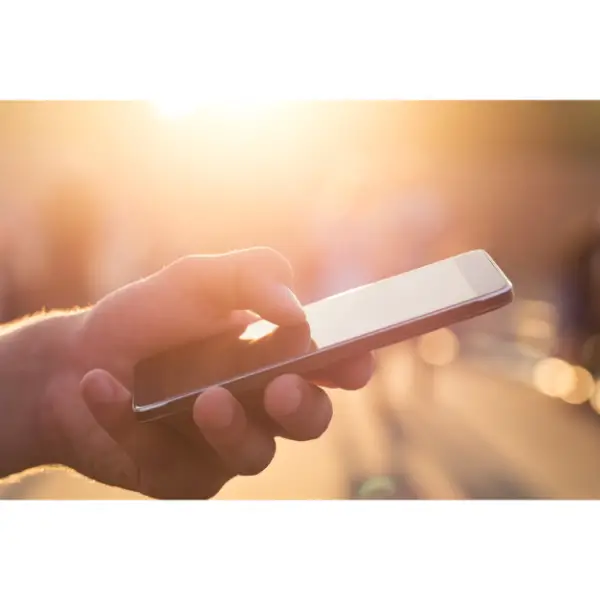Disclaimer: This post may contain affiliate links, meaning we get a small commission if you make a purchase through our links, at no cost to you. For more information, please visit our Disclaimer Page.
You can access usage statistics on an android phone by heading to the Digital Wellbeing section of the Settings app. In a few clicks, you can see a breakdown of how you use those hours spent scrolling and swiping.
Table of Contents
What Is Usage Statistics on Android?
Phones have become a vital part of people’s existence, and it even requires some effort to go “offline” for a length of time. Maybe the people around you have commented on how much time you spend on your phone, but you don’t believe them. Usage statistics can help you.
On Android, usage statistics provide information on how often you use your phone. It shows you the apps you frequent and how much time you dedicate to each one daily. Apple products call this feature “Screen Time.”
There are probably more than twenty apps on your Android, and each one uses resources like mobile data and battery. Usage statistics also show how these resources are spread across the apps you use. Some important applications of usage statistics include:
-
Improving your digital wellbeing
As helpful as phones are, spending too much time on them is unhealthy. Too much screen time affects your body and your relationships. The light from the screen can contribute to poor eyesight if not managed and controlled.
Smartphone tendinitis is an actual condition that develops when the tendons in your hand get inflamed from constant use/strain. The thumb and wrist are often affected, and they may require serious treatment.
Nobody likes to be around someone who cannot be in the moment. Communicating face-to-face with the people in your life is essential to keep those relationships going. If you can track your phone usage, you can easily make adjustments that benefit your health and relationships.
-
Business and marketing
Commercial sales through mobile phones are currently in the billions of dollars, and businesses with an e-commerce reach maximize data from how people use their phones. They can modify their marketing, customer service, and sales strategies with global usage statistics.
Knowing that most people pick up their phones within fifteen minutes of waking up in the meeting can inform companies to send texts overnight, and they are one of the first things mobile users see in the morning. The possibilities are limitless.
-
Optimizing your phone’s resources
Usage statistics on your Android show you the apps you use and indicate how your phone’s resources are shared amongst the apps. As you track these app statistics, you see the apps that take the most resources, and you can choose to uninstall them if they are not very relevant.
How Do I Turn on Usage Statistics on Android?
As the world gets increasingly digital, more people are turning to their mobile phones for information and connection. The days of feeling an oncoming storm in your bones have been replaced by checking your weather app. And how else will you know the best way to combine your outfit without tips from a Pinterest board?
Accord to Statista, “an average adult in the US spends no less than 3 hours per day on mobile devices”. People use phones everywhere: while watching television, in the bathroom, while waiting in line at the grocery store, before bedtime, in the bathroom, etc.
Google announced the Digital Wellbeing feature in 2018, and it aimed to help people curb the time spent on their phones.
Technically, you cannot “turn on” usage statistics on your android device because it’s already functional. But you can access it to check your usage statistics by following these steps:
- Open the Settings app on your Android
- Tap Digital Wellbeing & parental controls
- Under the Digital Wellbeing tools (at the top of the page), tap Show your data
You can now explore each app’s usage time and adjust settings as necessary. You can see a weekly report of your screen time in apps by tapping the graph icon at the top right corner of your screen.
Also shown on the graph or chart are how often you’ve unlocked your phone, the number of notifications you’ve received, and which apps sent them. Note that you will need to set up your profile the first time you access Digital Wellbeing.
You can adjust the settings to limit its use by tapping on each app. Set timers for your daily use of an app, restrict the app’s access to your phone’s resources, and pause notifications for a while.
To limit time spent on an app:
- Go to your Settings app
- Open Digital Wellbeing & parental controls.
- Select the chart
- Next to the app you want to adjust, tap Set timer.
- Choose how much time you want to allocate to that app, and tap Set
When you reach the set limit, the app will automatically close, and the icon will be dim. All app timers reset and midnight, but you can follow steps 1 to 4 above to delete the timer if you want to use the app before midnight.
Does Android Have an Activity Log?
Android, the world’s biggest mobile operating system, has an activity log that records and saves the data it collects. A log is a data file that holds information about the activities, functions, and patterns within an app, server, another device, etc. it shows time-stamped documentation of all operations related to the device.
With the activity log of your device, you can see everything you have done with your phone. And if you give your phone to someone else, you can also track what the person did on your phone. Yeah, welcome to the spy life.
Different Android devices may run other software for their activity logs. Carrier IQ owns Samsun’s software, and it records information like locations, activities, etc.
Regardless, the usage history for your android device can be seen in your Google activity settings because Google owns Android. To check the activity log on your device, do these:
- Open the Settings app on your device
- Go to Google
- Tap Manage your Google Account
- Click on Data & privacy
- Scroll down and open History settings
- Tap My Activity
Your online activity, privacy, history settings, etc., are now accessible. Android users can also access their activity log by using offline figures of used apps. To do this :
- Open your phone’s dial page and type *#*#4636#*#*
- You will be directed to a window called Testing.
- On this window, tap on the usage statistics option to see the apps used and how long each one was used.
- To see the most recent apps used, select Last time used from the options above, and the apps are displayed in a chronological sequence.
you can delete Google Activity Logs every day or over a specific period by:
- Go to your Settings App
- Tap on Google and select Manage your Google Account
- At the top, tap Data & Privacy
- Scroll to History Settings
- Select My Activity
- Tap Delete
- You have the option to Filter by Data & Product, and by clicking this, you can select the Duration to delete the data
How Do I Enable Data Usage in Statistics?
Data usage describes how much data your phone uploads or downloads while using mobile data. You can monitor and change your data usage settings to ensure your phone is not using too much data. This is an excellent way to manage your data plan and reduce how much you spend on your phone bill.
Whenever you surf the internet, stream music, or get directions from your phone without Wi-Fi, your mobile data is at work. The Data usage feature on Android enables you to monitor and limit Android’s data usage both in Wi-Fi and mobile data mode.
A feature in Android called ‘Data usage’ enables you to limit and monitor your Android’s data usage both in mobile data and Wi-Fi. Here’s how you can access and enable it:
- Data usage on your device:
- Open the Settings app
- Scroll to Network & internet
- Tap Data usage
- On the data usage page, click on View details
You can now explore the apps on your phone and see how much data each one uses.
References:
https://www.zipwhip.com/blog/how-much-time-youre-spending-on-your-phone/
https://www.businessinsider.com/how-to-check-app-usage-on-android
https://www.technipages.com/understanding-data-usage-on-your-android-phone
https://ting.com/blog/ting-tip-for-android-control-which-apps-use-background-mobile-data/


